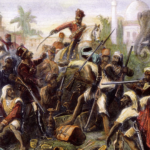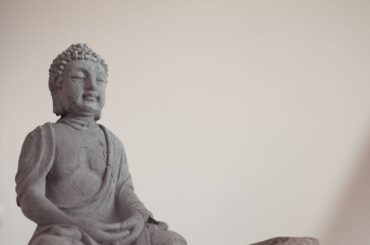
His Holiness ‘Tenzin Gyatso’, the 14th Dalai Lama, is a simple Buddhist monk and the religious leader of Tibet. He was born on 6th July 1935, in a family of farmers, Amdo, northeastern Tibet. Lhamo Dhondup was his name when he was just two and is also recognized as the rebirth of ‘Thubten Gyatso’, the 13th Dalai Lama. His Holiness began his education (monastic education) when he was 6 years old. In 1959, His Holiness appeared for his final examination at the age of 23 in Lhasa’s Jokhang Temple, during “Monlam Chenmo” (the annual Great Prayer Festival). He passed with privilege and was awarded the ‘Geshe Lharampa Degree’ (equal to the highest doctorate in Buddhist philosophy). After China’s invasion of Tibet (1950), His Holiness was summoned to handle full political power. He went to Beijing in 1954 and met with Chinese leaders, including Mao Zedong, Chou Enlai, and Deng Xiaoping. In 1959, following, his Holiness was forced to deport because of the brutal suppression of the Tibetan national uprising in Lhasa by Chinese troops. Since then His Holiness has been living in Dharamsala, in Northern India. The General Assembly adopted three resolutions on Tibet (between 1959-1965) after the Central Tibetan Administration appealed to the U.N. to consider the question of Tibet (in exile). A democratic constitution for Tibet was drafted by His Holiness in 1963 and was named “The Charter of Tibetans in Exile”. It provides detailed guidelines on the functioning of the Tibetan Administration with respect to Tibetans living in exile and also cherishes freedom of speech, belief, assembly, and movement. Finally, in May 1990, the Tibetan administration in exile was fully democratized by His Holiness’s refinements. September 2001, was the first time in Tibet’s long history, that the Tibetian people had elected their political leaders. Since 2011, His Holiness has described himself as retired. His Holiness the Dalai Lama is considered as a man of peace. For his non-violent struggle towards the liberation of Tibet, he was awarded the Nobel Peace Prize in 1989. He is also recognized as the first Nobel Laureate for his work and concern for global environmental problems. His Holiness has visited more than 67 countries. In recognition of his peace and non-violence messages, he has received over 150 awards and also authored and co-authored more than 100 books.







